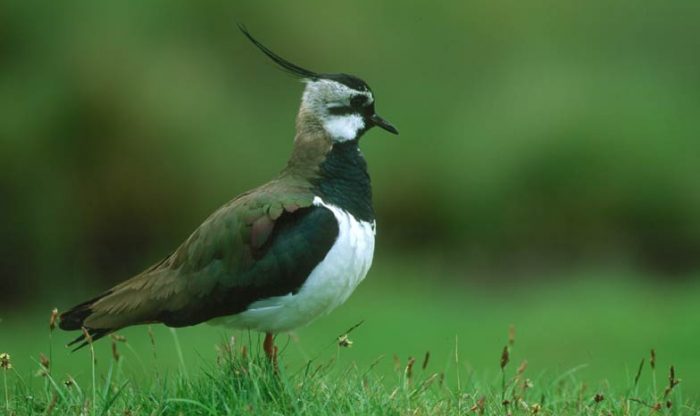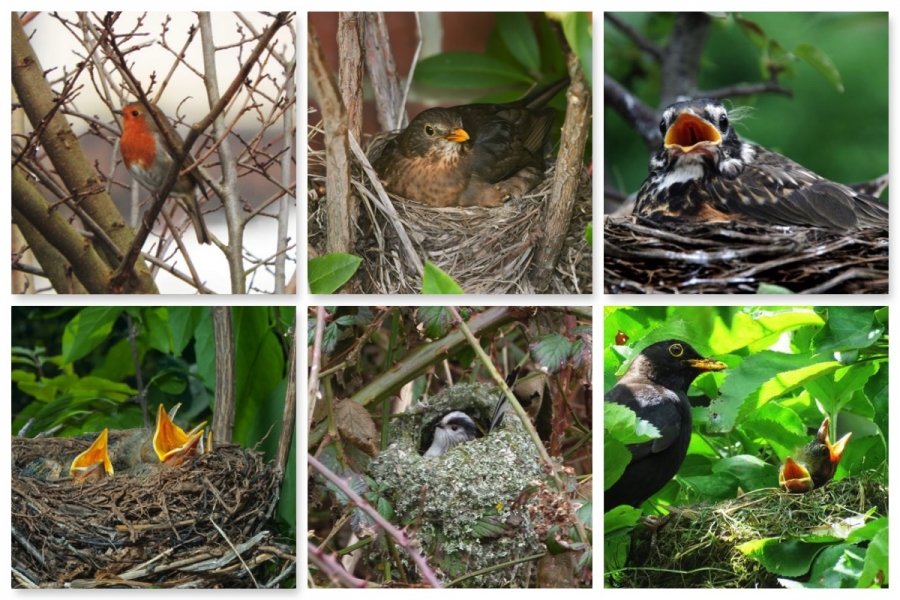Protection and management conferred by SSSI notification will make an increasingly significant contribution to the conservation of these species especially if further declines continue in the wider countryside. Nesting and breeding birds are also protected under the Act which makes it an offence to recklessly kill injure or take any wild birds nests or eggs.
 Breeding Bird Surveys Baker Consultants
Breeding Bird Surveys Baker Consultants
Some species have additional protection when nesting.

Breeding bird protection uk. Many bird habitats are also protected and local planning authorities. More information on general protection for birds can be found under Protection for breeding birds here. For these bird species its also an offence to do the following either intentionally or by not taking.
Of the 98 birds featured in the 2018 report 74 are known to have bred in the UK in 2018. Or b takes damages or destroys the nest of any wild bird while that nest is in use. As birds are particularly susceptible to disturbance during their breeding season bird protection legislation includes the Wildlife Amendment Act 2000.
The latest Breeding Bird Survey BBS report The Breeding Bird Survey 2019 covering population trends for the UKs bird species has been released today. Intentionally kill injure or take any wild bird. Thursday May 7 2020.
Or c takes of destroys an egg of any wild bird or if any person has in his possession or control any wild. 1 Protection of wild birds their nests and eggs. Summary of bird protection law in Scotland relevant to forestry The main legislation is the Wildlife and Countryside Act 1981 as amended by the Nature Conservation.
The Rare Breeding Birds Panel RBBP encourages and supports the recording and reporting of rare breeding birds in the UK. All wintering birds are protected under elements of the Wildlife and Countryside Act as amended 1981 with similar acts applied in Wales Scotland and Northern Ireland also ensuring the protection of wintering birds. The results of the BBS are valuable in evaluating the increasing and decreasing range of bird population which can be a key point to bird conservation.
To breeding birds but winter roosts of some species may be relevant especially if on. Close season for ducks and geese when below high water mark is 21 February to 31 August. More than 35 bird species use the steep rocky cliffs and grassy slopes that stretch from Port-e-Vullen to the Maughold lighthouse to breed.
All wild birds native to the UK including migratory species are protected under the Wildlife and Countryside Act 1981. The Rare Breeding Birds Panel collects breeding data on all species of birds with less than 2000 pairs breeding in the UK. We collate breeding data on all species with fewer than 2000 breeding pairs in the UK in order to report annually on their numbers trends and distribution and maintain a secure archive to support conservation and research for these species.
The species listed below are protected under the Wildlife and Countryside Act 1981 as amended by the Environmental Protection Act 1990. All birds their nests and eggs are protected by law and it is thus an offence with certain exceptions see Exceptions to. A further 47 species of birds are also thought to use.
To help us improve GOVUK wed like to know. Intentionally take damage or destroy the nest of any wild bird while it is in use or being built. Birds protected during the close season 1 February to 31 August but which may be killed or taken outside this period.
This report is a celebration of the dedication of the volunteers who give up their time and take part in bird surveying. These include the American robin which is a thrush and the Australasian robins of the family Petroicidae the relationships of which are unclear. Some birds known as schedule 1 birds eg barn owls have extra legal protection.
These species are catered for in sections 36 and 38 which relate to rare and unusual features and exceptionally diverse breeding bird. Collectively they walked 14996 km whilst actively surveying in 2019. UK Birds of Conservation Concern.
Intentionally take or destroy the egg of any wild bird. In addition to the protection afforded to all wild birds rarer or particularly vulnerable species listed on Schedule 1 of the 1981 Act such as the barn owl receive enhanced protection when breeding. The term robin is also applied to some birds in other families with red or orange breasts.
A pair of common cranes in flight. Schedule 1 species including their dependent young are protected from intentional or reckless disturbance whilst at or near the nest in. 8 Robin Estimated Numbers of Breeding Pairs.
It is an offence to intentionally disturb any of these species during the breeding season without a valid licence. In particular its records allow the production of annual totals of breeding pairs for each species on its list. The UK Breeding Bird Survey is administered by the British Trust for Ornithology the Joint Nature Conservation Committee and the Royal Society for the Protection of Birds.
With the presence of other birds not in breeding pairs conservationists said the population of cranes in the UK was now thought to be more than 200 birds. Schedule 2 - Part I. The BBS was designed.
The conservation of birds and their habitats in Ireland has been expanded by EU law most notably by the EU Birds Directive and EU Habitats Directive which. If save as permitted by or under this Act any person wilfully a kills injures or takes or attempts to kill injure or take any wild bird. Whilst licences can be sought there is was no specific need to visit nests of these or any species for the Atlas as proof of.
 Winter Bird Surveys Baker Consultants
Winter Bird Surveys Baker Consultants
Bird Surveys Breeding Bird Surveys Nesting Bird Survey Barn Owl Survey
 Breeding Bird Survey Report 2019 By British Trust For Ornithology Issuu
Breeding Bird Survey Report 2019 By British Trust For Ornithology Issuu
 Help Protect Our Ground Nesting Birds This Spring And Summer Cairngorms National Park Authority
Help Protect Our Ground Nesting Birds This Spring And Summer Cairngorms National Park Authority
 How To Prepare Your Site For The Nesting Season Facilitate Magazine
How To Prepare Your Site For The Nesting Season Facilitate Magazine
 Tree Work During Nesting Season The Facts
Tree Work During Nesting Season The Facts
 Uk Rare Breeding Birds Panel Information About Rare Breeding Birds In The Uk
Uk Rare Breeding Birds Panel Information About Rare Breeding Birds In The Uk
 Nesting Birds And The Law The War On Wildlife Project
Nesting Birds And The Law The War On Wildlife Project
 How Do Ground Nesting Waders Protect Their Eggs Discover Wildlife
How Do Ground Nesting Waders Protect Their Eggs Discover Wildlife
Eco Tree Care Conservation Woodland Management Planning Consultancy Conservation In Hertfordshire Cambridgshire Essex
 Legal Protection For Nesting Barn Owls The Barn Owl Trust
Legal Protection For Nesting Barn Owls The Barn Owl Trust
0 comments:
Post a Comment